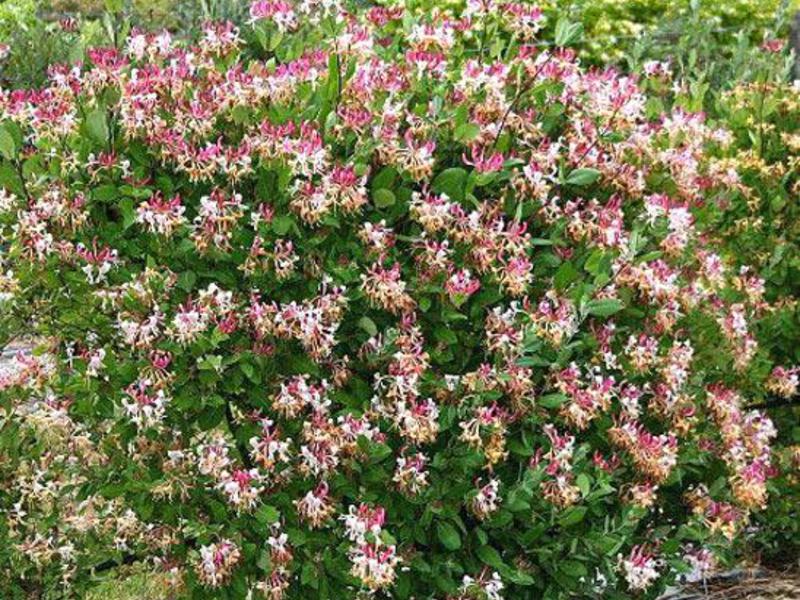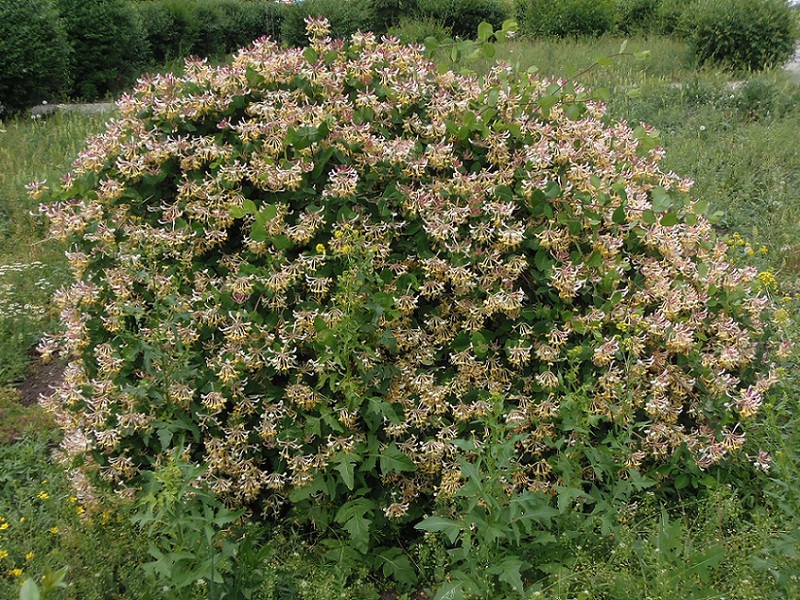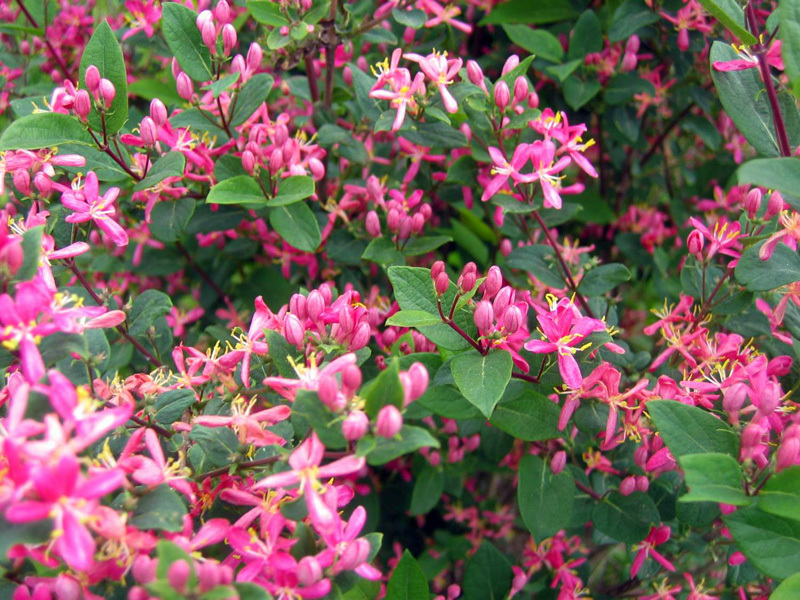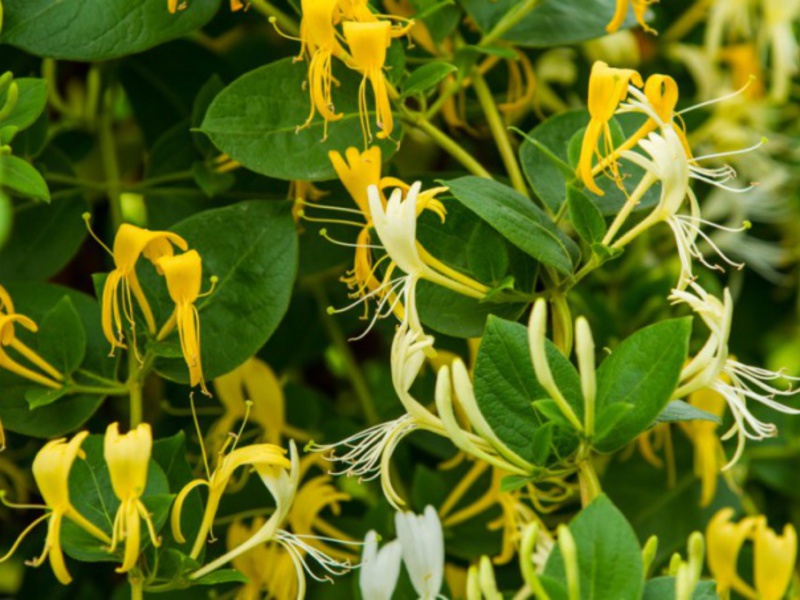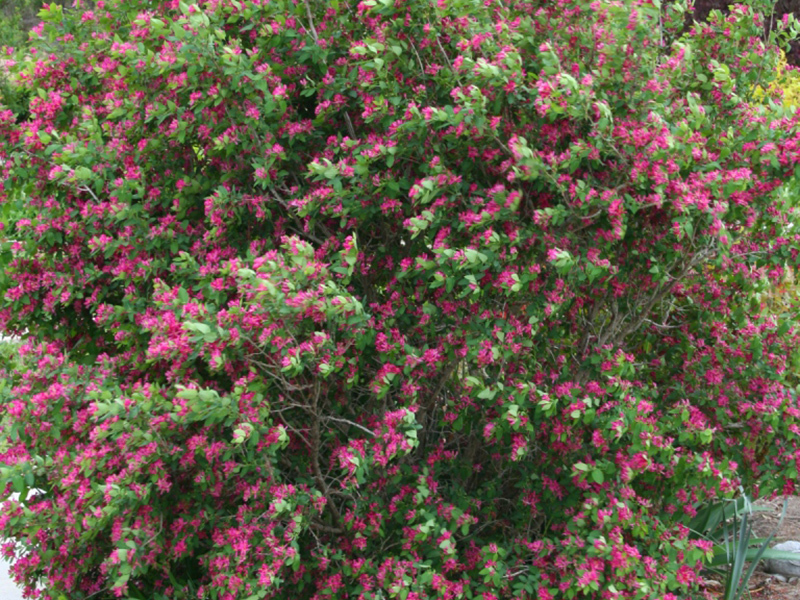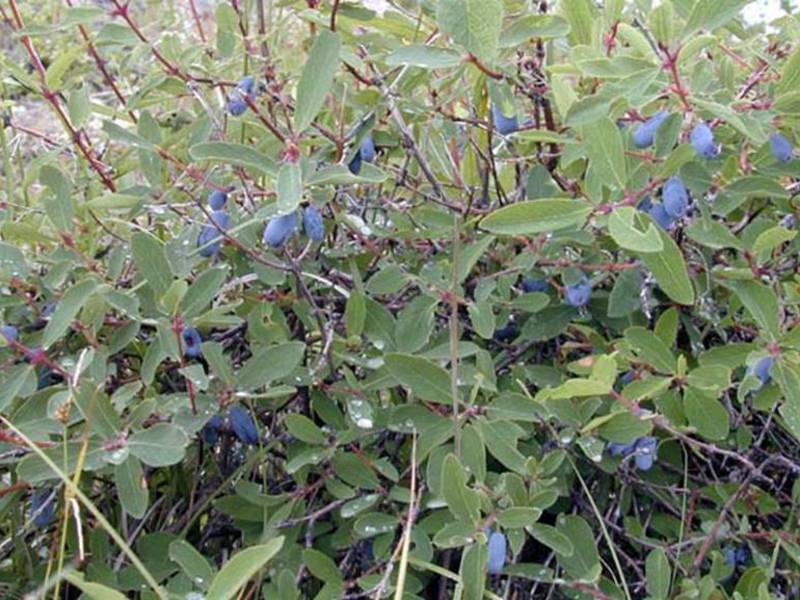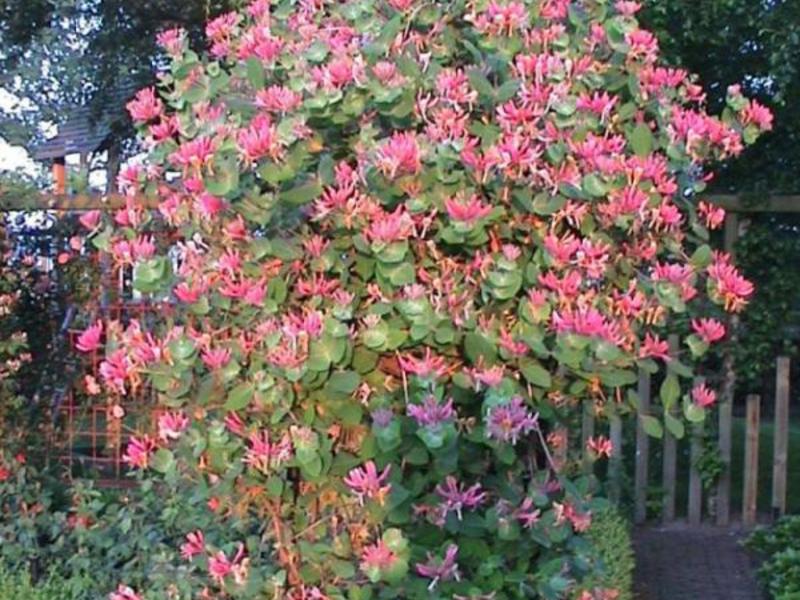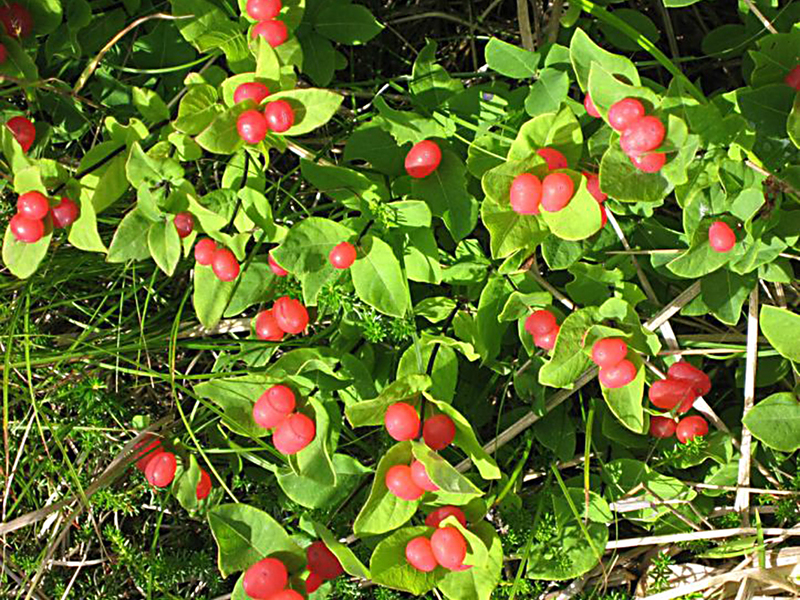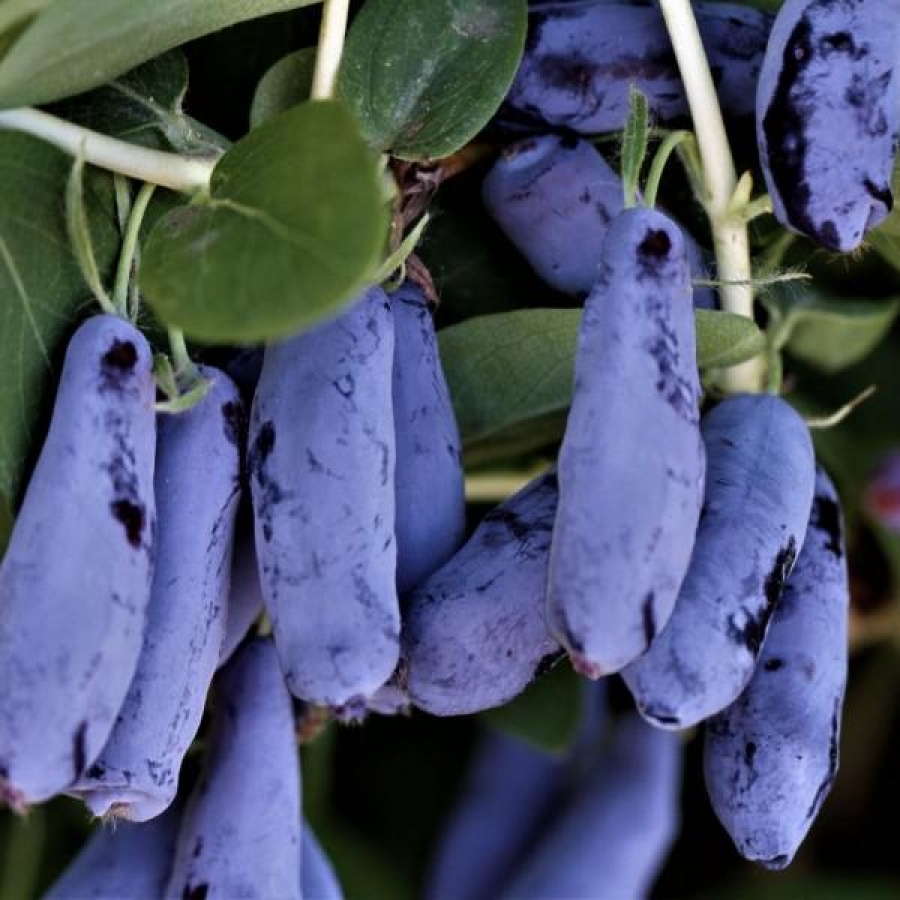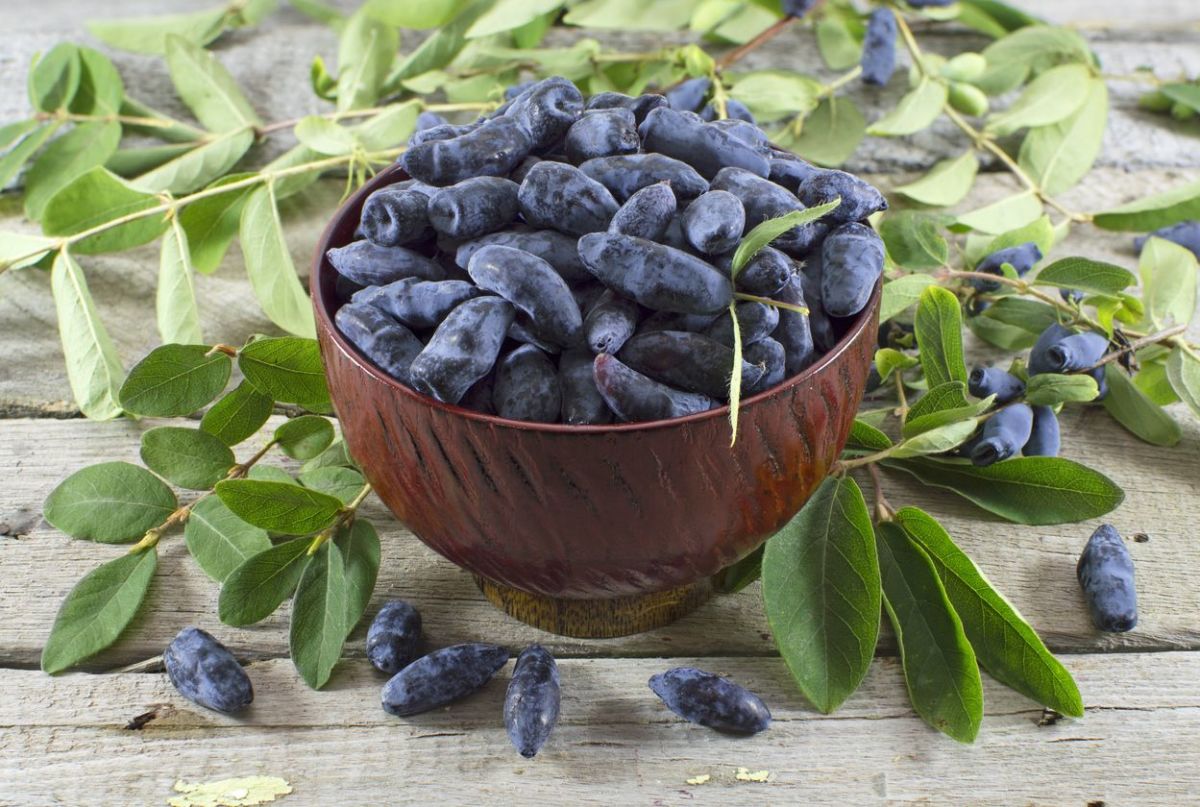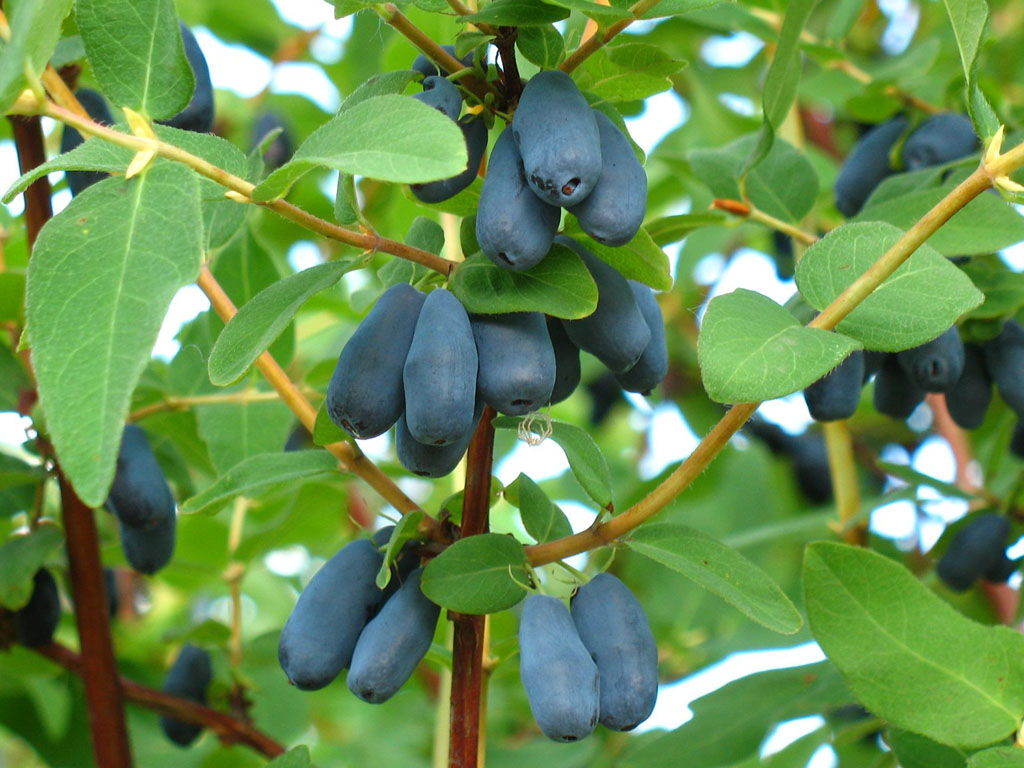Often a situation arises when it is necessary to choose such a plant for decorating a garden plot or creating a hedge, which is unpretentious and requires a minimum of maintenance. In this case, it will be correct to pay attention to the Tatar honeysuckle. This plant attracts attention for its unpretentiousness, increased resistance to drought and low temperatures, saline soils and polluted air. In any, even rather harsh conditions, it does not lose its decorative properties.
Tatar honeysuckle (in lat.Lonicera tatarica), wild, enough tall shrub... In natural conditions, it reaches a height of up to 4 meters. The area of growth extends from the mouth of the Volga and much further to the east, to Central Asia, as well as China. There are real thickets, which are several kilometers long, on the slopes of hills, occupying river valleys and the outskirts of forests of the steppe and forest-steppe zones. Tartar honeysuckle has adapted well to growth in shade. Therefore, in its natural environment, it quite often plays the role of undergrowth in deciduous forests.
The leaves have an ovoid-oblong shape, are located on short petioles, often the leaf even wraps around the stem. The corolla of a flower of a wide variety of shades from light pink to bright brick red. The flowers are double-lipped, length about 1.8 centimeters, the upper part of the flower lip is strongly dissected into several lobes almost to the beginning of the limb. Fruits are globular, usually bright red in color, but there are varieties and yellow fruits. The fruits ripen from July to September.
Content
Edible and decorative types of honeysuckle
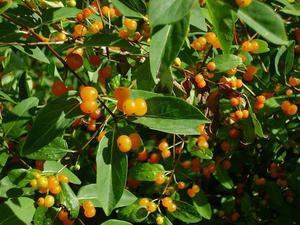 In total, science knows about 200 species of honeysuckle, such as honeysuckle, honeysuckle and other closely related species that grow in the form of vines. But the vast majority of honeysuckle species are used only as decorative ones, since their fruits are inedible.
In total, science knows about 200 species of honeysuckle, such as honeysuckle, honeysuckle and other closely related species that grow in the form of vines. But the vast majority of honeysuckle species are used only as decorative ones, since their fruits are inedible.
To obtain edible and tasty fruits, they grow mainly Kamchatka honeysuckle. The natural habitat of Kamchatka honeysuckle is Eastern Siberia and the Far East Russia, where the local population highly values its fruits. They are appreciated not only for such an early ripening period, taste and aroma, but also for their rather high saturation with anthocyanins, which, having significant P-activity, play a therapeutic and prophylactic role in human nutrition.
Unpretentious frost-resistant Swan - Kamchatka honeysuckle, rich in vitamin C:https://flowers.bigbadmole.com/en/yagody/zhimolost-lebedushka-opisanie-sorta-foto.html
The fruits of the Tatar honeysuckle are inedible. They have poisonous properties, so you should not eat them. Sometimes they are used in alternative medicine, as one of the basic components in the preparation of complex drugs.
Growing Tatar honeysuckle on the site
Tatar honeysuckle is easy enough to grow in any home gardens. But, despite this, it is necessary to have at least minimal knowledge about this plant.
Varieties
Tatar honeysuckle has a wide variety of morphological traits, the so-called polymorphism: at the moment, about 12 forms are known, which differ in color and shape of leaves, fruits, crown shape, etc.
Most common decorative forms:
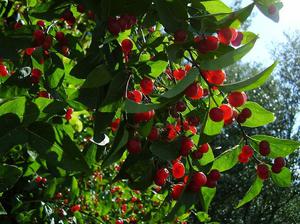 white (f. alba) - bright, white flowers;
white (f. alba) - bright, white flowers;- large-flowered (f. grandiflora) - with white, flowers are much larger;
- Siberian (red) (f. sibirica) - red flowers;
- crimson f. punicea -with rich pink flowers and very large, dense leaves;
- broadleaf (f. latifolia) - with large, up to 10 cm leaves and pink flowers;
- narrow-leaved f. angustifolia -with narrow leaves and deep pink corollas of flowers;
- low (f. nana) - low, dense shrub with pinkish small flowers and ovate-lanceolate, slightly tapering to the petiole, leaves;
- yellow (f. lutea) - bears fruit with yellow fruits.
Using wild varieties of honeysuckle, breeders were able to breed a number of decorative varieties Tatar honeysuckle, they differ somewhat from each other in their characteristics. The most widespread are the following varieties:
- Honeysuckle Tatar Rosea - forms a bush of relatively regular pyramidal shape. Flowering occurs at the end of May. The rich pink inflorescences retain their decorative effect for about two weeks. Each bud has a deep pink tint. Tubular flowers, no more than two centimeters in diameter. After flowering, poisonous orange-colored berries are formed;
- Tatar Honeysuckle Hack Red - forms a wide spreading crown. Blooms from late spring to mid June. The flowers are deep purple in color. The flowering is so abundant that it seems as if the shrub is covered with a colored shawl. Fruiting in dark, also inedible, red, numerous berries;
- Tatar honeysuckle Elegans is original in the color of the petals, which have pink stripes on a rich red background;
- Tatar honeysuckle Zabelii stands out for its excellent decorative characteristics of flowers, which have a burgundy color, and the fruits of a light red hue perfectly distinguish the bush against the background of other plants in the compositions.
Agrotechnics
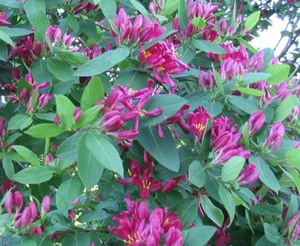 Well-prepared soil for planting honeysuckle, should be loose enoughwell drained. Despite the unpretentiousness of this plant, it is not recommended to plant it in very dry areas and lowlands prone to stagnant water.
Well-prepared soil for planting honeysuckle, should be loose enoughwell drained. Despite the unpretentiousness of this plant, it is not recommended to plant it in very dry areas and lowlands prone to stagnant water.
The distance between individual plants in a hedge should be about 0.5 m, in a free planting - 2-2.5 m. The planting pits are filled with a ready-made soil mixture, which is made up of river sand, high peat and sod land. The bottom of the pit is covered with a drainage layer, about 4 centimeters thick. For this expanded clay is best suited... After planting, the seedlings need to be watered abundantly to remove air pockets near the roots.
Honeysuckle can be grown without care, but still its decorative qualities and flowering time will depend on the conditions. Care consists in feeding, pruning, mulching.
When and what fertilizers does honeysuckle need:https://flowers.bigbadmole.com/en/yagody/chem-podkormit-zhimolost-vesnoy.html
Fertilization is carried out in several successive stages:
- top dressing in the spring - immediately after the snow melts, with fertilizers containing nitrogen;
- summer feeding - during the active growing season of the bushes, with phosphorus and potassium fertilizers. This will promote vigorous growth and vigorous flowering.
Hot, dry summer periodic watering is desirable... In the fall, you need to dig in the trunk circle, while adding wood ash. Digging is carried out to a depth of no more than 18 centimeters, since the roots of this plant are shallow. After digging, the soil is mulched with peat. These operations will reduce the number of pests next year.
Forming pruning is performed after the leaves have fallen off.Old bushes are rejuvenated every two to three years. Dried and diseased branches are pruned throughout the year. It is also advisable to remove shoots from the lower tiers, they lie on the ground and will interfere with the care of the bush.
In the conditions of our climatic zone, Tatar honeysuckle does not require winter shelteras it tolerates cold well. Only sometimes the tips of the branches are somewhat damaged by frost, which does not affect the decorative effect of the bush as a whole.
Tatar honeysuckle is strongly affected by pests and diseases. Most often, the seedlings are infected with honeysuckle aphids, to combat which they use natural (infusion of hot pepper, garlic, smoking tobacco) (for small plantings and mild damage) or chemical (Aktellik, Aktara, etc.) insecticides. No less often, plants can be damaged by honeysuckle and spider mites, various scale insects and false scutes and leaf-eating insects (caterpillars of moths, leaf beetles, etc.). No less dangerous are fungal (some spots, powdery mildew) and viral diseases (mosaic, a virus that provokes the formation of "witch's brooms").
Probably, low resistance to pathogens - the main disadvantage of this plant. With significant damage to diseases and certain pests, as well as with viruses, plants die completely. In order to avoid this, chemical preparations are used - insect-acaricides (to combat insects and pests) and fungicides (to fight diseases). But we should not forget that well-groomed plants have high immunity, therefore the best weapon to protect against diseases and pests is competent and timely care.
All means and preparations for combating pests and various diseases must be purchased only in specialized stores and exactly follow the recommendations that are indicated in the attached instructions.
Reproduction
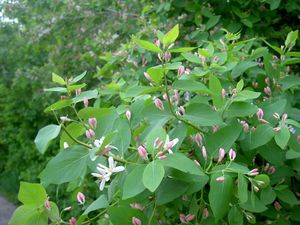 For breeding Tatar honeysuckle, you can use:
For breeding Tatar honeysuckle, you can use:
- green cuttings;
- seeds;
- dividing the bush of a sufficiently mature bush;
- reproduction by layering.
For green cuttings ripe strong shoots of this year are selected and cut into pieces, about 10 cm long. It is also good to use cuttings "with a heel", tearing off the lower part of the shoot from the shoot of the last year.
The planting material is placed obliquely (an angle of about 45 °) into a soil mixture of peat and calcined coarse sand (proportion - 1: 3). A film is installed over the planted cuttings, which makes it possible to maintain the humidity of the air and soil necessary for the beginning of root formation. Cuttings need to be protected from the sun, periodically ventilated, watered and sprayed, but not too often (in order to avoid decay). Already after two to three weeks, with the necessary care, roots begin to form.
Propagation of honeysuckle by green and lignified cuttings:https://flowers.bigbadmole.com/en/yagody/razmnozhenie-zhimolosti-cherenkami-vesnoy.html
Rooted cuttings in autumn do not immediately transplant into the ground, since their root system is still weak, and with sudden temperature changes in the soil, they can be "pushed" to the surface and dry out. It is much better to leave the plantings in a greenhouse or greenhouse until winter, and before a significant drop in temperature, remove the film and insulate them with spruce branches until spring. In the second year, the cuttings are planted in the planned place in the garden, and, after a year, the strongest specimens already begin to bloom.
Mature plants of this decorative honeysuckle, at the age of at least 3 years, can be propagated by dividing the bush. Reproduction by layering can give good results.
With seed reproduction, the traits of the mother plant are split, therefore they can not always be inherited. Therefore, even despite the fact that the seeds of the Tatar honeysuckle are characterized by excellent germination, nevertheless, vegetative reproduction is optimal.
The use of Tatar honeysuckle
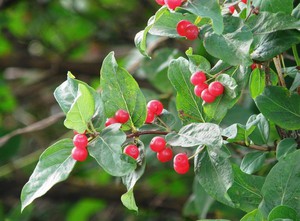 It is worth recalling that this plant is included in the group of poisonous representatives of the flora, in particular, fruits are distinguished by this property. There have been cases of severe poisoning of children who used these berries for food.
It is worth recalling that this plant is included in the group of poisonous representatives of the flora, in particular, fruits are distinguished by this property. There have been cases of severe poisoning of children who used these berries for food.
But, in addition to the widespread use of this plant in landscape design, it is also used in both folk and traditional medicine.
Bark of tartar honeysuckle has an antibacterial effect, and therefore this raw material is used by folk healers for medicinal drugs, which can have a positive effect on the body when certain diseases appear.
The tincture, which is prepared on the basis of this bark, also has anti-trichomonas activity. A decoction of Tatar honeysuckle is often used as an external agent, in the form of lotions and can be used for the treatment of wounds and abrasions.
But with any use of this plant for medicinal purposes, a mandatory consultation with a professional doctor is required.
Conclusion
Planting Tatar honeysuckle on a personal plot will give it additional aesthetics and will delight you for more than one year. In addition, due to its unpretentiousness, there is no difficulty in leaving.
This culture is especially useful for those owners of garden plots who cannot devote much time to their decorative plantings.
